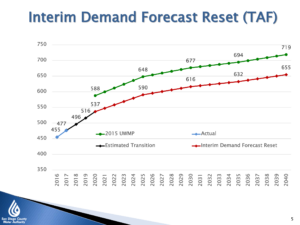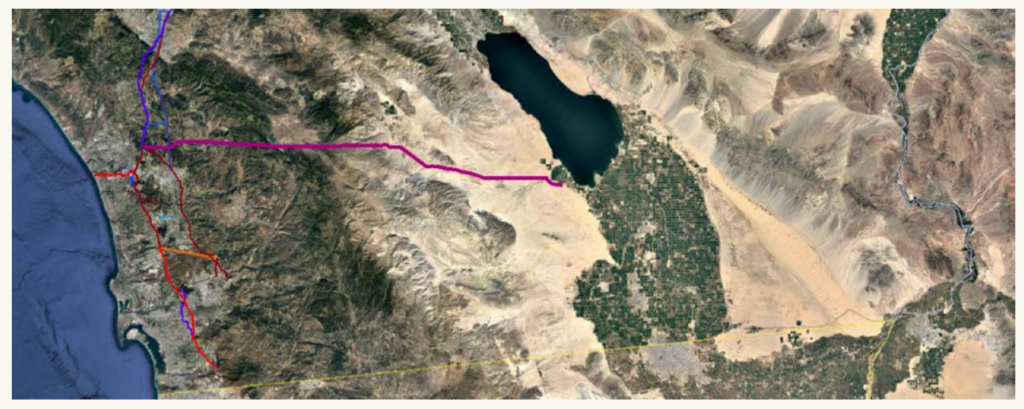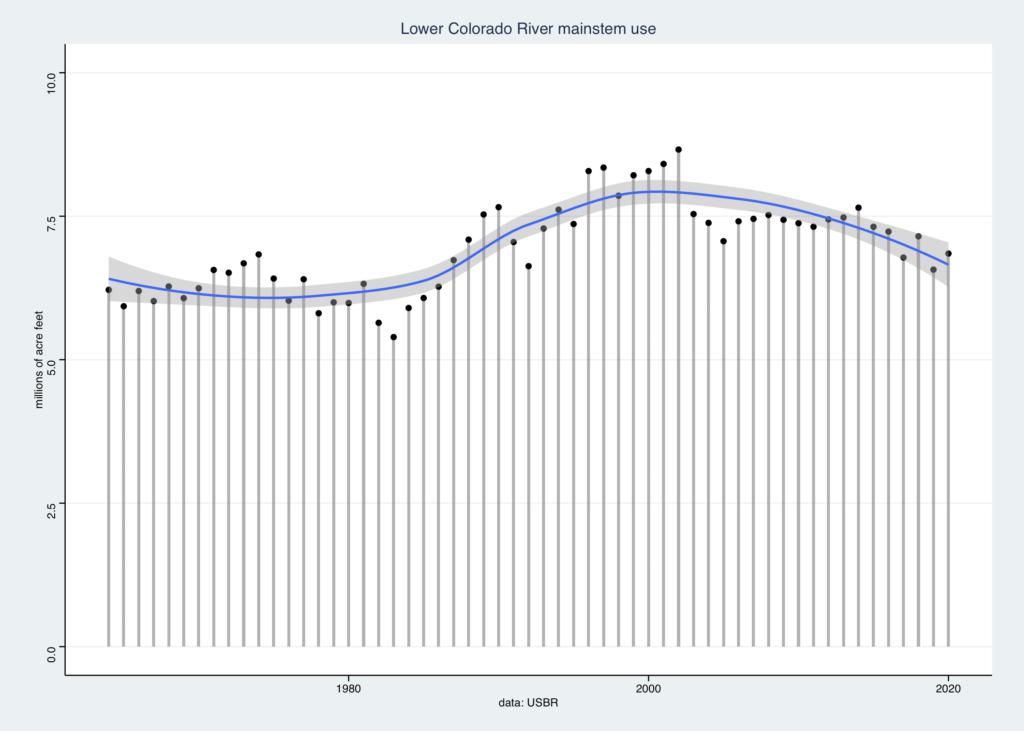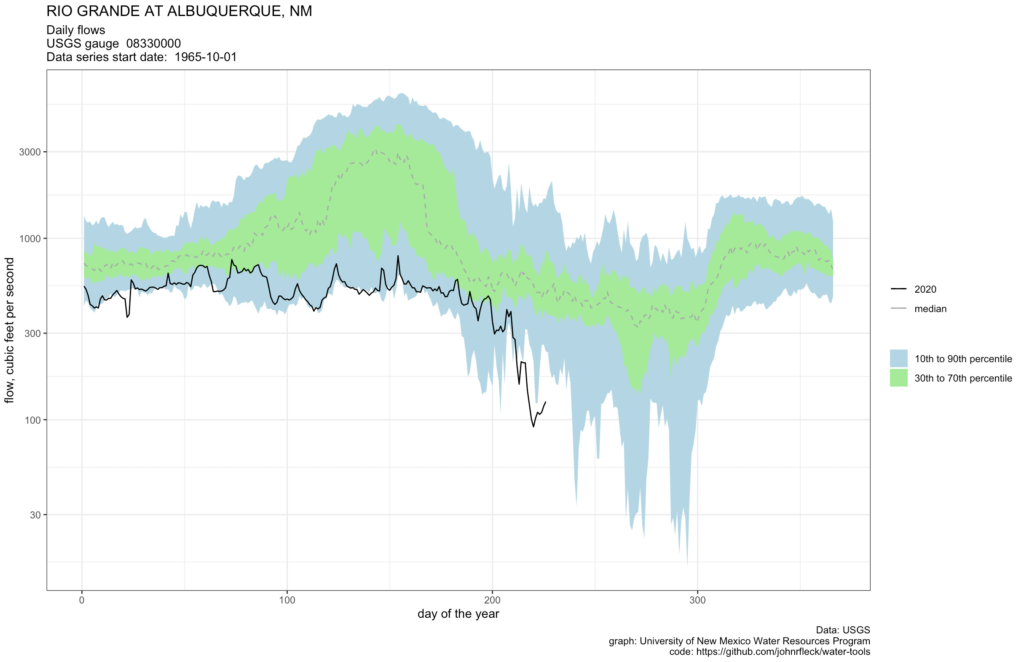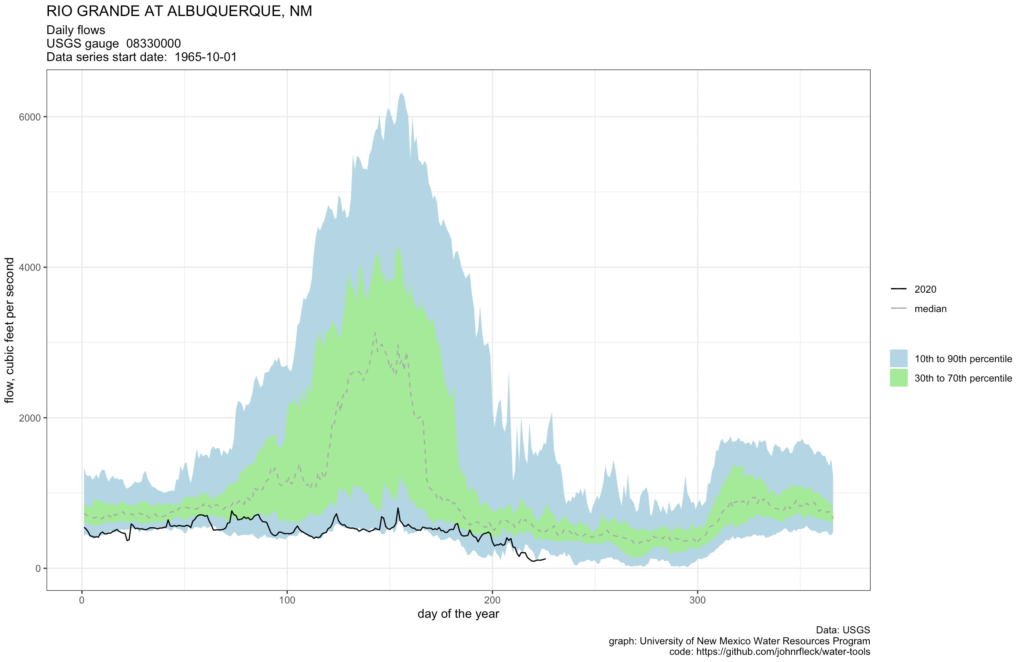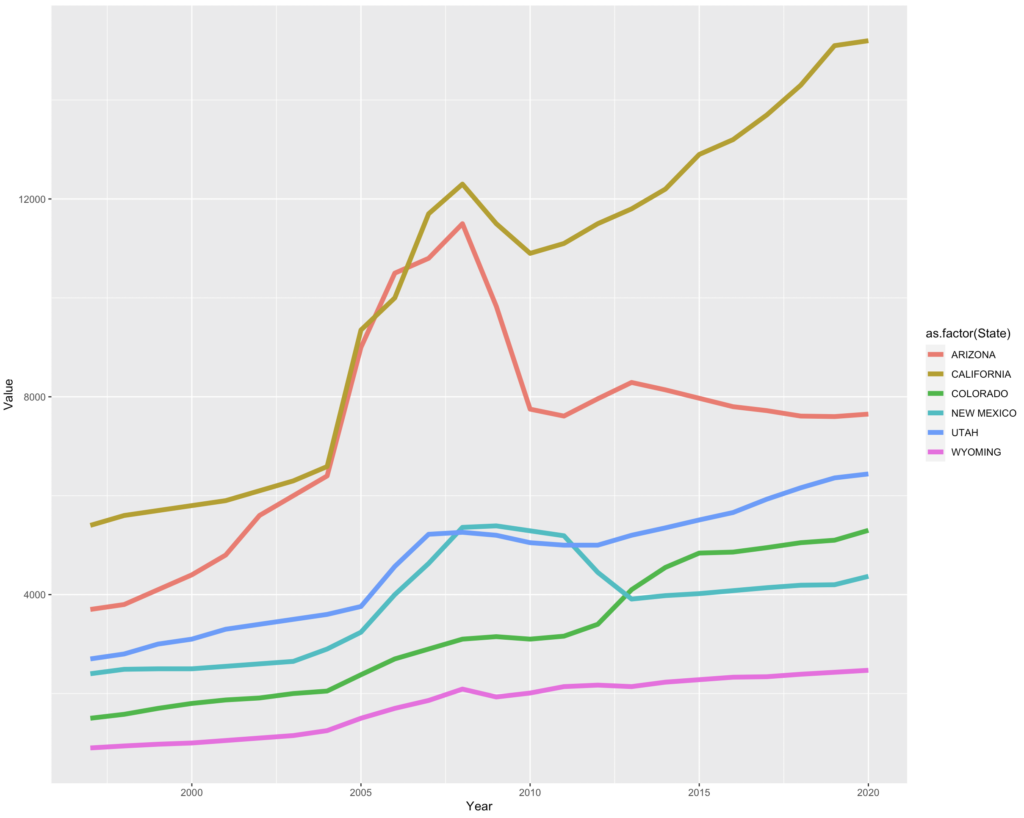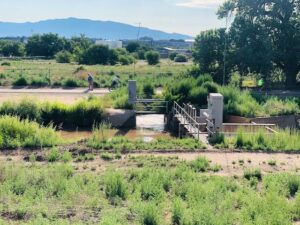The written version of remarks delivered by Eric Kuhn at the Aug. 25 Western Resource Advocates webinar on the Lake Powell Pipeline, featuring Eric, WRA’s Bart Miller, and Alice Walker, attorney for the Kaibab Band of Paiute Indians.
PRESENTATION COMMENTS ON THE LAKE POWELL PIPELINE
ERIC KUHN 8/25/2020
When John Cyran asked me to participate in this panel, I said yes with two important caveats. First, I’m on this panel as an author/river nerd that has studied the history of the development of the Colorado River (it’s definitely a passion of mine). As a retiree I no longer have any official affiliation with any entity on the river (I’m an unsigned free agent). I’m not representing the views or providing a perspective of my former employer, the River District and certainly not Colorado, the state I’ve lived in for the last 40 years. Second, while I understand the perspectives of Bart and Alice, my objective of being on this panel is neither to oppose nor support the project.
What I want to do is briefly describe some of the related Colorado River Compact issues and complications and discuss the future of the Colorado River. As most of you may know, the physical source of the supply for the LPP is Lake Powell, located in the Upper Colorado River Basin (the legal source may actually be Flaming Gorge Reservoir), the location of use, the St. George area is in the Lower Basin. I do not consider this complication, which I’ll describe in detail, as a fatal flaw. The reality is that the Lake Powell Pipeline (if built) is not the first, nor will it be the last project, to move water from the Upper Basin to the Lower Basin. My primary concern, as a student of the Colorado River, is the future governance of the Colorado River. How do we best make decisions for the basin and the river, given the challenges we’re facing from climate change, the full use/overuse of the available supply, and the competition for the available water among the basin’s agricultural, urban, recreation, native Americans, and environmental uses.
The 1922 Colorado River Compact negotiators could not agree on an approach to apportioning the consumptive use of the river’s water among the seven basin states. Instead, as a compromise, they apportioned the use of the water among two basins with the dividing line as Lee Ferry, one mile downstream of the confluence of the Colorado and Paria Rivers (Lee’s Ferry). As a “quirk” of defining the basins based on the drainage areas above and below Lee Ferry, three states ended up with lands in both basins. Arizona has lands in the Upper Basin, primarily on the Navajo Reservation, that drain above Lee Ferry, and Utah and New Mexico have lands in the Lower Basin. In New Mexico it is the headwaters of the Gila and Little Colorado Rivers. In Utah, the Virgin River and Kanab Creek drainages join the Colorado River below Lee Ferry, and thus, the St. George area is in the Lower Basin.
The 1922 compact divided the water up three ways: 8.5 million acre-feet of beneficial consumptive use exclusively for the Lower Basin, 7.5 million acre-feet exclusively for the Upper Basin, and a surplus (4-5 million acre-feet) for Mexico and future apportionment. This three-way split was based on the assumption that the total supply of the river (at the international boundary with Mexico, NOT Lee Ferry) was over 20 million acre-feet per year (a faulty assumption even before the compact was ratified – see Science Be Dammed). I believe that by the use of the term “exclusive” the commissioners meant that water apportioned for the Upper Basin was only for the Upper Basin (as defined by the compact) and not available for use in the Lower Basin. In fairness to Utah, both the 1922 compact and the Upper Colorado River Basin compact include provisions that provide that states control the use and distribution of water within their boundaries which, Utah argues, means that it can its Upper Basin apportionment to its portion of the Lower Basin.
However, I strongly believe that for the first 80-90 years of the compact, if one were to ask about every compact expert and state water official if the 1922 compact allowed water apportioned to the Upper Basin to be used in the Lower Basin (or vice versa), the answer would have been HELL NO! Then came the need to solve real water supply problems and the Navajo-Gallup Pipeline, a project which is now mostly built and takes water apportioned by the Upper Colorado River Basin Compact to New Mexico and delivers it to the Gallup area located in the upper reaches of the (normally dry) Little Colorado River drainage, a Lower Basin tributary. As a part of its water rights settlement with the Navajo Nation, New Mexico chose to use a portion of its Upper Basin apportionment for this much needed project. After discussions led to a consensus approach among the seven basin states Congress authorized the Navajo-Gallup Pipeline. This approach, I believe, is consistent with the intent of the 1922 compact (Article VI).
As I mentioned earlier, I view this forum on the LPP as an opportunity to raise a number of concerns I have for the future of the Colorado River (I’m not suggesting that these problems are all on the back of the LPP). Simply put, the Colorado River is shrinking due to climate change, and most, if not all, of the available science suggests this shrinkage will continue for decades into the future. Under the “law of the river” we legally apportioned 17.5 million acre-feet (16 under the 1922 compact and 1.5 for Mexico under the 1944 treaty) based on an assumption of 18 million acre-feet of supply at Lee Ferry (about 18 in total). By the 1940s for the Mexican Treaty and the Upper Basin compact we thought the supply was 16 million acre-feet (18 in total). By the 1960s and the authorization of the Central Arizona Project, our best estimate of the long-term average natural flow at Lee Ferry had dropped to about 15 million acre-feet per year. Since the Upper Basin compact apportions to each State of the Upper Division a percentage of the water available to the Upper Basin under the 1922 compact, determining how much water is available is not a simple manner. NOTE: there are differing interpretations of the Upper Basin’s compact commitments. With the storage we have in place (Lake Powell & others), considering the variability of the river, and meeting downstream compact commitments, 15 million acre-feet (on average at Lee Ferry) provides about 6 million acre-feet of usable water for the Upper Basin, a number that many in the Upper Basin stubbornly cling to (or perhaps wish for).
But that was before we understood the impacts of climate change. Based on the last 21 years, the river’s natural supply, before dams and diversions remove water for human use, has been about 12 -12.5 million acre-feet at Lee Ferry, NOT 15. Because of the continuing impacts of climate change, the 12-12.5 million acre-feet today could easily be less than 11 million acre-feet per year within 50 years. A project like the LPP has a useful life far longer than 50 years. With 12.5 million acre-feet of natural flow at Lee Ferry, the Upper Basin’s usable water is about 4 – 4.25 million acre-feet – about what we’re consuming today. If regional temperatures continue to rise reducing the river’s natural flow at Lee Ferry by another million acre-feet AND the Upper Basin’s compact commitments remain unchanged, the Upper Basin could be overusing its available supply by a million acre-feet per year. NOTE: As a basin, our annual consumptive use is about 14-15 million acre-feet (including Lower Basin tributaries). We’ve balanced the books by drawing down Lakes Mead and Powell. In the recent few years, the system has been about in balance as the Lower Basin has reduced its use of Lake Mead water from over 8 million acre-feet per year in 2001 to most recently about 6.8 million acre-feet per year.
Simply put, the Upper Colorado River Basin is now caught in a vise. We have fixed commitments under the 1922 compact and a declining supply of water above Lee Ferry. Yet, many are still operating under the illusion that the Upper Basin has “unused” entitlement. As I noted earlier, the LPP is not the first, nor will it be the last proposed project to move water from the Upper Basin to the Lower Basin. With the closure of the Navajo Generating Station, Arizona and the Navajo Nation are discussing options for the disposition of the 34,000 acre-feet of Upper Basin water that was once used by NGS (Arizona’s total UB apportionment is 50,000 acre-feet). Will this water also be transferred for use in the Lower Basin? If it’s appropriate for Utah to decide it can use water apportioned for the exclusive use in the Upper Basin in the Lower Basin, what is to prevent Arizona from making the same decision? By intentionally ignoring the geographic limitations carefully written into the 1922 compact by its negotiators, are we cracking the door open for speculators to purchase Upper Basin agricultural lands, dry those lands up, then deliver the consumptive use to the Lower Basin? At a time when the water apportioned to the Upper Basin is slowly going away, does it make sense to move water apportioned for its use to the Lower Basin?
These are not simple problems. What I hope will happen is that the discussion of the LPP will lead to a more general discussion of how to address the impacts of climate change on the Upper Colorado River Basin. As a former water manager, I want to acknowledge that, if I were in the shoes of the manager of the Washington County Water Conservancy District, I would be very nervous about having one source of supply, the Virgin River drainage. As a southern and relatively low elevation watershed, the Virgin River is especially prone to drying from climate change. To address the impacts of climate change on the Upper Basin I believe we should consider four major objectives: aggressive conservation (every drop of water counts), a plan to operate existing infrastructure and build new infrastructure designed to accommodate the deep uncertainty created by climate change, a basin-wide approach for sharing the risk of climate change among the Upper Basin, Lower Basin, and Mexico (this should be our number one goal in the negotiations of the post-2026 river management guidelines), and reducing greenhouse gas emissions.
Unlike the Lower Basin, the Upper Basin has been successful in maintaining a unified approach on Colorado River issues. We did so for the negotiations of the 1922 and 1948 compacts, the Treaty with Mexico, the Arizona vs. California Supreme Court litigation, and for all of the major federal development and environmental laws that have shaped the Colorado River. It is now past time to do so on climate change.


